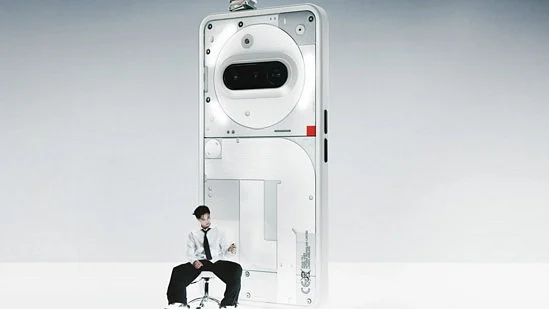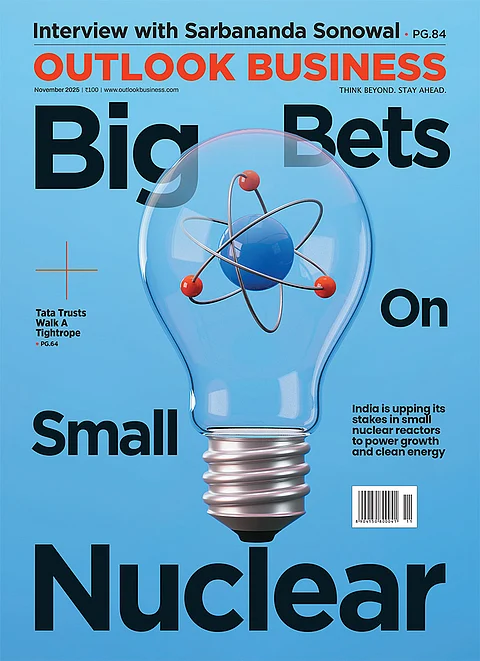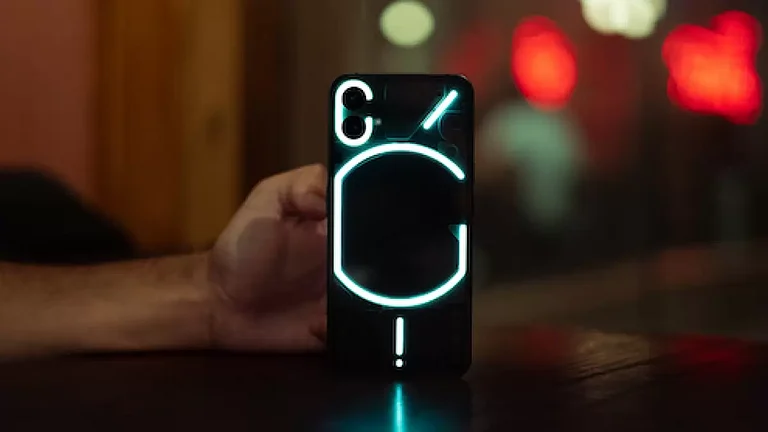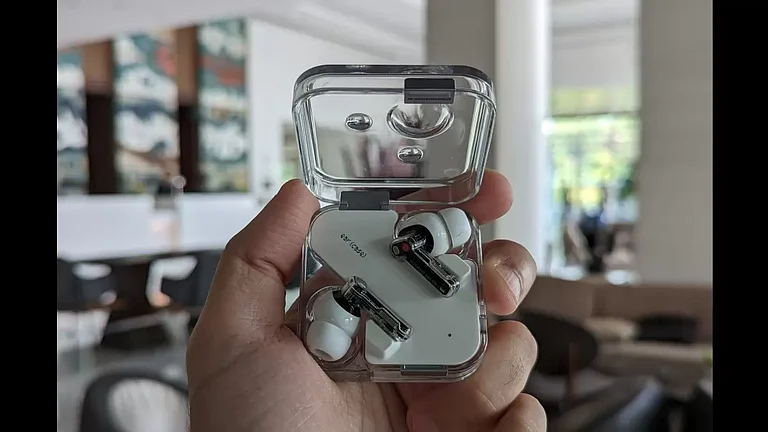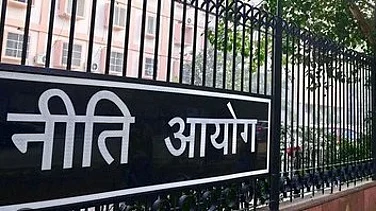Nothing hasn’t pushed beyond the “glyph lights” and “the clean Nothing OS” for its brand new Phone (3a) and Phone (3a) Pro. The Phone (3a) Pro, which I have already reviewed, is a power-packed phone in the under Rs 30,000 segment.
It’s got an AMOLED Display, the Essential Key, a telephoto camera and much more. With the Phone (3a) coming in the sub-Rs 25,000 segment, does it make some key compromises, and is it worth the “bargain” most people think they are getting?
Let’s dive in and find out.
That appealing hardware design
Yes, I’ll be frank. I absolutely love the design choices Nothing has been making, and three generations in, I’m not even one bit tired of it. Yes, I don’t use those “glyph lights” as often as I thought I would, but the transparent back design stands out from the sea of boring, run-of-the-mill smartphones. The Blue colour (there is also a Black and a White option) stands out from the crowd. I got the white variant for review, and the contrast of the black buttons looks terrific.
Yes, the smartphones' USPs are brand-new camera setups at this time. Yes, the Phone (3a) doesn’t have a gigantic camera bump (that the Phone (3a) Pro does) getting in the way daily, and its weight is also much better balanced.
One excellent decision Nothing made for the Phone (3a) is to ditch polycarbonate for glass on the back panel. It’s got a plastic frame around it. Three light segments (with 26 individually addressable LEDs) are on the back. Lastly, the slightly less rounded corners are far from a dealbreaker, and the build quality is excellent, with little to no flex.
Even with subtle design changes, Nothing was able to bump up the Phone (3a)’s ingress protection rating from IP54 to IP64.
The in-display optical fingerprint sensor works as advertised. It’s fast and accurate.
The Nothing Phone (3a) has a gorgeous 6.77-inch Full HD+ display (with a 120Hz refresh rate and HDR10+ certification). But here’s the kicker. Nothing has vastly improved the display’s brightness. The panel is rated for 800 nits (1,300 nights in high-brightness mode and a peak of 3,000 nits in HDR mode). The display is crisp and vibrant, and I enjoyed watching several IPL matches.
Let’s talk hardware and software
The Phone (3a) is powered by Qualcomm’s Snapdragon 7s Gen 3 SoC. It’s a capable chipset that is optimised for productivity. Yes, the company may have worked with Qualcomm to optimise gaming, but this is far from the best gaming phone in this segment. For some reason, the Phone (3a) felt slightly slower than the Phone (3a) Pro while using daily apps. They both run on the same chipset, which was a little disappointing.
Overall, the smartphone runs fast, blitzes through daily tasks, and doesn’t heat up in the process. It’s paired with 8GB of RAM (though I would have liked at least 12GB), and it is faster than its predecessor.
For three generations, Nothing has focused on Nothing OS to set its smartphones apart. That’s no different with the Phone (3a). The software experience is absolutely fantastic. It’s a clean, well-optimised software that stands out from the crowd. It’s closer to a Google Pixel, yet very different in nature.
There are plenty of customisations (on the home screen and otherwise), support for lock screen widgets, and much more. In fact, there is a distinct lack of third-party apps, which is refreshing in a sea of bloatware on modern-day smartphones
This time around, there is the revamped Quick Settings drop-down (with resizeable tiles), a new “Smart” app drawer and the new AI-powered “Essential Space”. Yes, there’s even an “Essential Key” button. The Phone (3a) runs on Nothing OS 3.1 (based on Android 15). With the Phone (3a), Nothing is guaranteeing 3 years of software updates, and 6 years of security updates.
Are the cameras any good?
Let me just cut to the chase. You aren’t buying the Phone (3a) for its cameras. That’s the whole USP of the Phone (3a) Pro.
With the Phone (3a), you get a solid camera, but nothing outstanding. It’s got a 50MP Samsung sensor that can struggle with post-processing, especially with low-light images. Shots taken in good daylight conditions are crisp and retain a lot of details.
Thankfully, there is a 2x telephoto lens and that provides just enough versatility for the consumers. There’s minimal noise in daylight photos from the main sensor and dynamic range and contrast are well-balanced. Colours seem natural but they do lack the ‘pop’ you might be expecting.
What I was most impressed by was the portraits that I took with the Phone (3a). Natural skin tones are there and the background blur is good. Edge detection can have some issues, but that’s with all mid-range smartphones.
The results are impressive, showcasing well-defined facial features, natural skin tones, and an appealing background blur effect.
A dedicated telephoto camera (rather than a crop) is always the way to go. The dynamic range is wide, the colours are natural, and even though it can’t zoom in much, the photos are good.
Selfies see the biggest improvement vis-a-vis last years smartphone, but they still struggle a lot in anything but good lighting conditions.
Battery life
Does the 5,000mAh battery do the job here? Well, I’d say it does, just about. With a medium-to-heavy usage pattern I was able to just about eke out a day’s worth of usage. By the time I would hit the sack, the smartphone would be at 10 percent or less battery with about 6 hours of screen-on-time (SoT). It’s possible to make some adjustments and get to lunch time on the second day. I’d say the chipset is efficient and Nothing has done a decent job here.
There’s no charger in the box but the Phone (3a) does support charging speeds of up to 50W with a PD+PPS charger. There’s a Nothing charger (that you can buy separately) or you can use any third-party chargers. A full charge takes just over an hour. While it isn’t the best in this segment, it isn’t that bad on the whole.
Verdict: Is this the best in the sub-Rs 25,000 segment?
I may go against what others in the industry have said, but the Phone (3a) makes too many compromises vis-a-vis the Phone (3a) Pro. For just a couple of thousand rupees more, you can get a fantastic smartphone in the Phone (3a).
With that out of the way, let me just reiterate that the Phone (3a) isn’t at all bad. It’s still a brilliant phone in its own right. You’re still getting that unique design, a fantastic OS, a pretty good display, and some capable cameras alongside all-day battery life.





